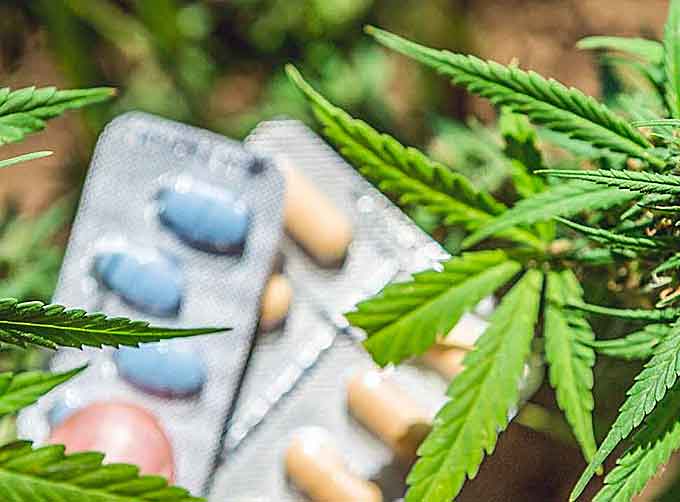
U.S. overdose death rates linked to synthetic opioids, likely from illicitly manufactured fentanyl (IMF), increased more than 45 percent from 2016 to 2017 while death rates from heroin and prescription opioids – still far too high – remained stable.
The findings come from an in-depth CDC analysis of the latest available drug overdose death data and expands upon data released in November by the National Center for Health Statistics.
(WARNING: GRAPHIC VIDEO. This video content is intended for educational and informational purposes only. ** The Pasco County Sheriff’s Office released a video which showed a man with what they say are all the signs of an overdose. He had a strong pulse but wasn’t breathing, pinpoint pupils, and he began turning blue in the face. The responding deputies administered Narcan, or naloxone hydrochloride. The drug essentially reverses an overdose. Within three minutes, the man became responsive. “Our main goal here is to save lives, to give a person another chance,” said Corporal Sherryl Johnson-Tandy, who tracks the agency’s Narcan use and provides deputies with training. The man in the video got another chance because the deputies carried Narcan on them. “2017 was the first year that Pasco County began to experience some of the consequences associated with the opioid crisis,” said Captain Mike Jenkins.)

(The chemical agent has been deployed 65 times in Pasco County since March of 2017 to those who have overdosed on opioids. In 63 of those cases, Narcan revived the person. “This drug does not work if it’s a cocaine-related,” said Cpl. Johnson-Tandy. “It only works on opioids. Both of those had actual cocaine in their systems.” More than 900 Pasco County employees are trained to use Narcan. More than 660 deputies carry rescue kits on them every day. “We recognize that we cannot arrest our way out of this problem,” said Capt. Jenkins. “So, the deployment of Narcan is one of the strategies we are utilizing to address this issue.” Narcan is a one-time use nasal spray or it can also be administered intravenously. Courtesy of PoliceActivity and YouTube. Posted on May 15, 2018.)
The report, published online in an early release from CDC’s MMWR, analyzes the growing number of U.S. drug overdose deaths from 2013 to 2017, and by demographic and geographic characteristics from 2016 to 2017.
More than 702,000 Americans have died from drug overdoses from 1999 to 2017 – about 10 percent of them in 2017 alone.

“The drug overdose epidemic continues to evolve, with the involvement of many types of drugs including opioids, cocaine, and psychostimulants,” explains Debra Houry, M.D., M.P.H., director of CDC’s National Center for Injury Prevention and Control.
“This underscores the urgency for more timely and localized data to inform public health and public safety action.”
Synthetic opioid deaths expanded in 2017
Opioids were involved in over two-thirds of overdose deaths in 2017.
Of the 35 jurisdictions reporting data sufficient for analysis, 23 states and the District of Columbia saw increased rates of death linked to synthetic opioids.
IMF likely drove the 1.5-fold increase in deaths involving synthetic opioids from 2016 to 2017.
Previously, deaths involving synthetic opioids mainly occurred east of the Mississippi River.
(Overdose Awareness: What You Need to Know about Drug Overdose. Courtesy of the Centers for Disease Control and Prevention (CDC) and YouTube. Posted on Aug 30, 2018.)
The latest available data now show eight states west of the Mississippi had significant increases in such deaths: Arizona, California, Colorado, Minnesota, Missouri, Oregon, Texas, and Washington.
While overdose deaths involving synthetic opioids expanded, heroin- and prescription-opioid-involved deaths remained stable from 2016 to 2017.
However, overdose death rates involving heroin and prescription opioids were, respectively, seven and four times higher in 2017 than in 1999.
Some preliminary indicators in 2018 point to possible improvements based on provisional data; confirmation will depend on final 2018 data and results of pending medical investigations.
The drug overdose epidemic grew and evolved in 2017

There were more than 70,000 drug overdose deaths in 2017, with a rate of 21.7 per 100,000 population. The rate increased by nearly 10 percent from 2016.
The rates of overdose deaths involving cocaine increased by more than 34 percent. The rate of overdose deaths involving psycho-stimulants increased by more than 33 percent.
Opioid death rates differed across the states examined in this study, with the highest relative increases occurring in North Carolina, Ohio, and Maine.
From 2016 to 2017, opioid-involved deaths:
- Increased for both sexes
- Increased among all people in all age groups over the age of 25
- Increased among white, black, and Hispanic people
- Had the largest absolute death rate increase in males 25-44
The largest percent change increases in opioid-involved death rates were among blacks (25.2 percent) and adults over age 65 (17.2 percent).
What is being done?
A whole of government approach is being led by the U.S. Department of Health and Human Services (HHS) to prevent and respond to drug overdoses, specifically those involving opioids.
The HHS five-point strategy provides:
- Better treatment
- Better data
- Better research
- Increased access to naloxone, and
- Better pain management
(Health and Human Services Secretary Alex Azar provides an overview of our five-point strategy for combating the opioid crisis. Courtesy of U.S. Department of Health and Human Services and YouTube. Posted on Sep 25, 2018.)
Within HHS, CDC conducts surveillance and research; builds state, local, and tribal capacity for prevention; supports providers, health systems, and payers; partners with public safety; and empowers consumers to make safe choices.

“Drug overdose and opioid-involved deaths are a critical public health issue,” explains the report’s lead author and epidemiologist Lawrence Scholl, Ph.D., National Center for Injury Prevention and Control.
“It is important for CDC to share these data so states and communities have the information needed to inform their prevention activities and better respond.”
CDC is working with states across the country through the Enhanced State Opioid Overdose Surveillance (ESOOS) program to develop a multifaceted approach for faster and more comprehensive surveillance to track emerging threats in order to prevent and respond to the epidemic.
The new report also reinforces the continued need for response strategies including increasing naloxone availability, educating patients and providers about safe prescribing practices, reducing the syndemic of infectious diseases and opioid overdoses, providing patients with linkage into treatment, and fostering greater collaboration between public health and public safety.
CDC: Most Pressing Health Threats of 2018
From the opioid overdose epidemic to foodborne disease outbreaks and antimicrobial resistance to the Ebola virus outbreak in the Democratic Republic of Congo (DRC), CDC worked around the clock – and around the globe – to protect Americans from health threats in 2018.

“CDC has a long history of using the best available science and data to make public health decisions,” said CDC Director Robert R. Redfield, M.D.
“My vision for CDC and public health here and around the world is to get people to see the possible.”
“We have to be bold and innovative to eliminate disease, protect Americans from health threats, and improve the human condition.”
Here’s a closer look at some of the biggest health issues that CDC tackled in 2018.
Responding to Disease Outbreaks
A new CDC analysis of data reveals that life expectancy for Americans continues to decline — a troubling trend primarily linked to the drug overdose epidemic.
Mortality rates increased for 7 of the 10 leading causes of death in the U.S. Drug overdoses continued to increase – 47,600 drug overdose deaths involved any type of opioid, including heroin and illicit opioids, representing over two-thirds of all overdose deaths.
Ever since CDC data revealed the extent of America’s epidemic of opioid overdose deaths, CDC has been at the forefront of efforts to combat the crisis.

To help support CDC’s response and bolster state efforts, Congress appropriated $476 million in FY2018 and as a result, CDC increased funding to reach all 50 states and four U.S. territories to scale-up prevention and response activities, including improving the timeliness and quality of surveillance data and advancing our understanding of the opioid overdose epidemic.
The ultimate goal is not just stopping outbreaks, but preventing them from happening in the first place.
Throughout 2018, CDC has investigated and helped resolve several foodborne outbreaks, including E. coli infections associated with romaine lettuce, Salmonella in ground beef and Kosher chicken, and Listeria in pork products.
These investigations are shedding light on ways to make the U.S. food supply even safer.
CDC and partners also continue to carefully study cases of Acute Flaccid Myelitis (AFM), a serious but rare condition that causes weakness in one or more limbs.
In November, CDC announced the establishment of an AFM Task Force to aid in the ongoing investigation to define the cause of, and improve treatment outcomes for, patients with AFM.
(In 2016, Rachel Scott’s son, Braden presented with a cold. He was later diagnosed with AFM at age 5. Rachel has been vocal about the disease ever since, developing a movement with a group of AFM parents to raise awareness and demand action from the CDC. Courtesy of NBC News and YouTube. Posted on Dec 7, 2018.)
Since August, CDC has been coordinating with the Democratic Republic of Congo (DRC) Ministry of Health to respond to the second largest outbreak of Ebola in history.
Earlier this year, CDC assisted in the response to an unrelated Ebola outbreak in northwestern DRC, which was brought to a quick end through a robust international effort.
Rapid response is critical to contain any outbreak of viral hemorrhagic fever, but continuing a comprehensive response in DRC has been difficult because the affected area is remote, resource-challenged, and has serious security concerns.
(Ebola has been reported in a number of locations in eastern Democratic Republic of the Congo, making the current outbreak the second worst in history. Getting medical care to the sick is complicated by ongoing violence. Nancy Aossey of International Medical Corps speaks with Nick Schifrin about prevention, treatment options and why the health crisis is likely to get worse before it gets better. Courtesy of PBS NewsHour and YouTube. Posted on Dec 17, 2018.)
CDC is supporting the response with staff stationed in Kinshasa and WHO headquarters in Geneva, as well as in neighboring countries.
Disease Control and Elimination
CDC continues to make strides in disease control and elimination; however, challenges remain.
One health consequence of the opioid epidemic is a dramatic increase in infectious disease.
Hepatitis C infections have more than tripled in recent years, and the evidence points to people who inject drugs being at a high risk for hepatitis C and other forms of viral hepatitis.
(Hepatitis C is a viral infection causing liver disease. Over 3 million people in the US are infected with hepatitis C and over half remain undiagnosed. The vast majority of individuals living with hepatitis C do not have symptoms. Courtesy of Johns Hopkins Medicine and YouTube. Posted on Feb 13, 2018.)
Additionally, CDC data released this year show steep and sustained increases in sexually transmitted diseases (STDs) in the U.S., including nearly 2.3 million cases of chlamydia, gonorrhea, and syphilis.
This surpassed the previous record by more than 200,000 cases and marked the fourth consecutive year of sharp increases in these STDs.
(The CDC reports that cases of sexually transmitted diseases such as chlamydia, gonorrhea, and syphilis reached an all-time high in 2016 – Which has now been surpassed in 2017. But who or what is to blame for the rising STD numbers? Courtesy of Fox News and YouTube. Posted on Sep 27, 2017.)
In 2018, CDC released data showing the suicide rate among the U.S. working-age population increased 34 percent between 2000 and 2016.
Additionally, suicide rates rose in nearly every state between 1999 and 2016.
Suicide is the 10th leading cause of death and its rise has contributed to lowered life expectancy over the past few years.
Comprehensive suicide prevention activities are needed to address the full range of factors contributing to suicide.
Chronic disease continues to remain a CDC priority.
Despite being largely preventable, heart attacks, strokes, heart failure and other related conditions caused 2.2 million hospitalizations, resulting in $32.7 billion in costs and 415,000 deaths, according to CDC data. Many of these events were in adults ages 35-64.
If every state reduced these life-changing events by six percent, 1 million cardiac events could be prevented by 2022.
(One is a heart problem that most people survive. The other is a heart problem that few people survive. See what causes a heart attack versus cardiac arrest, and learn what to do in an emergency. Courtesy of Cleveland Clinic and YouTube. Posted on Feb 6, 2018.)
Global Health Security
The most effective way to protect Americans from health threats that begin overseas is to prevent, detect, and contain diseases at their source.
This year, to advance global health security and protect Americans and U.S. interests, CDC continued to support more than 60 countries in building core capacities in disease surveillance, laboratory systems, public health workforce, and emergency management and operations.
(Learn More. Courtesy of The Task Force for Global Health and YouTube. Posted on Mar 27, 2018.)
The success of that support has been illustrated in many countries, such as in Uganda, a country that has partnered with CDC for many years.
Today, Uganda’s national viral hemorrhagic fever surveillance and laboratory system is able to detect and respond to some of the world’s most dangerous viruses, like Ebola and Marburg, as well as other threats such as anthrax.
In Thailand, Guatemala, Kenya, Sierra Leone, and Zambia, CDC experts helped public health practitioners harness the power of technology to improve disease surveillance.
In India, as a result of CDC’s support in hospital-based surveillance, laboratorians were able to rapidly detect and respond to a deadly Nipah virus outbreak.
The AMR Challenge
Also this year, during the United Nations General Assembly in New York, the United States announced The AMR Challenge—a global initiative to combat the growing threat of antibiotic resistance (AR or AMR).
(The U.S. Government and CDC launched The AMR Challenge, a yearlong effort to accelerate the fight against antimicrobial resistance (AMR) with action across governments and industries. Courtesy of the Centers for Disease Control and Prevention (CDC) and YouTube. Posted on Dec 14, 2018.)
This unprecedented challenge, led by HHS and CDC, charges global stakeholders like pharmaceutical and health insurance companies, food animal producers and purchasers, medical professionals, government health officials, and other leaders from around the world to take meaningful actions to address antibiotic resistance.
The UN also held its first High-Level Meeting (HLM) on ending tuberculosis, which contributes to one third of the world’s AMR cases.
In support of UN HLM targets, CDC is on the forefront of efforts to expand TB preventive treatment.
TB could be eradicated, but it’s not.
TB is the number one infectious disease killer—2 billion people are now infected with TB.
This year 10 million people will develop active TB.
We have what we need to eliminate TB: the tools, the skills, and the experts.
But we need collaboration from all corners of the global health community.
(Courtesy of the Centers for Disease Control and Prevention (CDC) and YouTube. Posted on Jun 11, 2018.)
CDC, as part of the U.S. President’s Emergency Plan for AIDS Relief (PEPFAR), is supporting the push to provide TB preventive treatment to 5 million people globally living with HIV by 2020, and is developing new tools for finding and treating eligible children.
(John Robert Engole was the first patient in the world to receive antiretroviral therapy (ART) treatment under the U.S. President’s Emergency Plan for AIDS Relief (PEPFAR) through a CDC-supported partner in Uganda. Courtesy of the Centers for Disease Control and Prevention (CDC) and YouTube. Posted on Jun 14, 2018.)
















